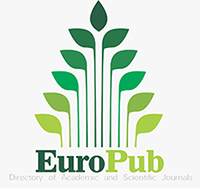Çocuklarda Ewing sarkom ailesi tümörler: Tek merkez sonuçları
Çocuklarda Ewing Sarkom ailesi tümörler
DOI:
https://doi.org/10.5281/zenodo.7722358Anahtar Kelimeler:
Ewing sarkom ailesi tümör, çocuk, prognozÖzet
Amaç: Bu çalışmanın amacı, Ewing sarkom ailesi tümörlü (EFT) çocukların klinik özelliklerini ve sonuçlarını gözden geçirmektir.
Gereç ve Yöntem: Patolojik olarak EFT tanısı alan çocukların onkoloji dosyaları retrospektif olarak incelendi. Hastaların klinik özellikleri, tedavi yaklaşımları ve tedavi sonuçları kaydedildi. Ayrıca, hastaların tam kan sayımlarından nötrofil/lenfosit oranları (NLR) ve platelet/lenfosit oranları (PLR) da hesaplandı.
Bulgular: Çalışmaya 50 hasta dâhil edildi. Hastaların yaşı 9,6 ay ile 17,5 yıl arasında değişiyordu (ortanca, 10,1 yıl). Erkek/kız oranı, 25/25 idi. En sık başvuru şikâyet ağrıydı (n= 43, %86). Ekstraosseoz tutulum yapan 16 hasta (%32) vardı. Bölgesel lenf nodu metastazı yapan 6 hasta (%12) vardı. On iki hastada uzak metastaz saptandı. Altı hastada uzak metastaz yeri akciğerken altı hastada diğer uzak organ metastazı vardı. Genel ve olaysız sağ kalım oranları, sırasıyla %60,1±8,9 ve %52,5±8,2 idi. Hastaların izlem süreleri 0,2 yıl ile 15,7 yıl arasında değişiyordu (ortanca, 3 yıl). Kız cinsiyet, ileri evre hastalık, laktat dehidrogenaz değerinin yüksek olması, tümör volümü > 10 cm3, yaş ≥ 12, anemi varlığı, nötrofil lenfosit oranı sağ kalım üzerine negatif prognostik etkide bulunmuş olsa da istatistiksel olarak anlamlı bulunmadı. Metastatik hastalığın olması ve PLR > 150 olması olaysız sağ kalım üzerindeki negatif etkisi istatistiksel olarak anlamlı bulundu.
Sonuç: Ewing sarkom ailesi tümör tedavisinde multidisipliner yaklaşım oldukça önemlidir. Bizim çalışmamızda her ne kadar yaşam oranları üzerine etki etmese de (hasta sayımızın az olması ile ilişkili olabilir) yüksek riskli hastalarda yeni tedavi yaklaşımlarına ihtiyaç vardır.
İndirmeler
İndir
Yayınlanmış
Nasıl Atıf Yapılır
Sayı
Bölüm
Lisans
Telif Hakkı (c) 2023 Chronicles of Precision Medical Researchers

Bu çalışma Creative Commons Attribution-NonCommercial-ShareAlike 4.0 International License ile lisanslanmıtır.






